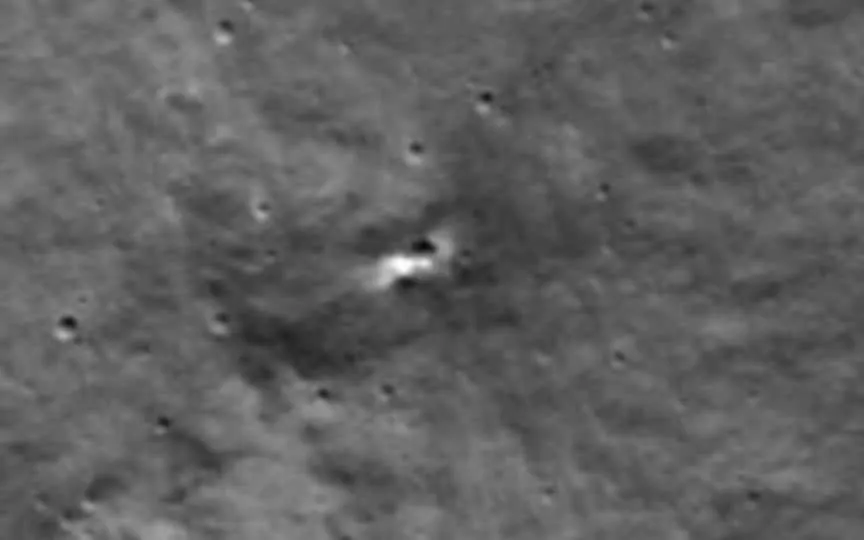NASA Captures Image of Luna 25 Spacecraft Impact on the Moon
A new Moon crater, believed to be the result of Russia’s Luna 25 spacecraft’s crash, has been identified by NASA’s Lunar Reconnaissance Orbiter. The crash occurred due to an anomaly encountered during Luna 25’s descent. This finding highlights the cooperation between space agencies and contributes to our knowledge of lunar exploration. Here are the main points regarding the aftermath of the Luna 25 crash:
1. NASA’s Lunar Reconnaissance Orbiter (LRO) has recently identified a new lunar crater believed to be the result of an impact from Russia’s Luna 25 mission.
2. Luna 25 experienced an anomaly during its descent, causing an inadvertent impact with the lunar surface on August 19. Roscosmos revealed the estimated impact site on August 21.
3. In response, the LRO Camera (LROC) team and the LRO Mission Operations team conducted a mission on August 24 that lasted approximately four hours starting at 2:15 p.m. until 6:12 p.m. EDT, to photograph the crash site.
4. By comparing images before and after the estimated time of impact, the LROC team confirmed a recently formed small crater near the presumed impact point of Luna 25, indicating its connection to the impact of the Luna 25 mission.
5. The newly formed crater has a diameter of about 10 meters and is located at the coordinates of 57.865 degrees south latitude and 61.360 degrees east longitude, and its height is about minus 360 meters.
6. Notably, the impact occurred on the steep inner rim of the Pontécoulant G crater, characterized by a slope of more than 20 degrees, approximately 400 kilometers from Luna 25’s planned landing site.
7. The LRO spacecraft, managed by NASA’s Goddard Space Flight Center, has been collecting important lunar data since its June 18, 2009 launch.
8. Equipped with seven powerful instruments, LRO has significantly improved our understanding of the Moon and its complexity.
9. The LROC, responsible for high-resolution lunar imaging, is controlled and operated by Arizona State University.
10. This discovery of a new lunar crater adds valuable insights into the dynamics of the lunar surface and the impact of spaceflight on the lunar terrain, and highlights the collaboration between space agencies such as NASA and Roscosmos in advancing lunar exploration.




